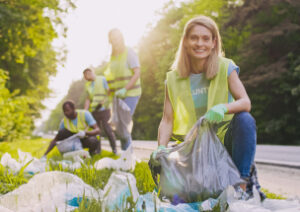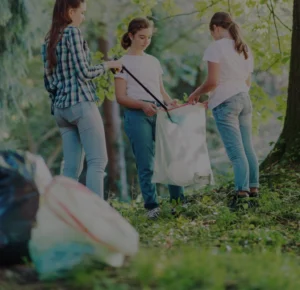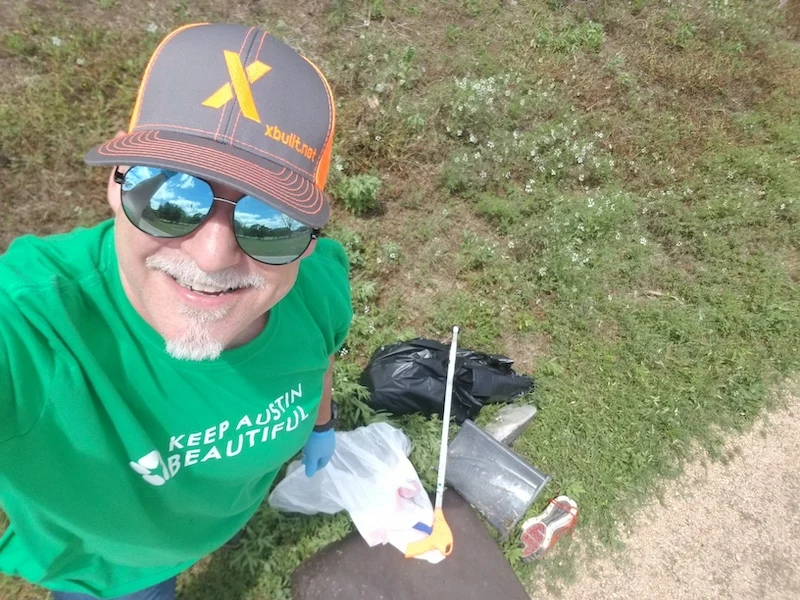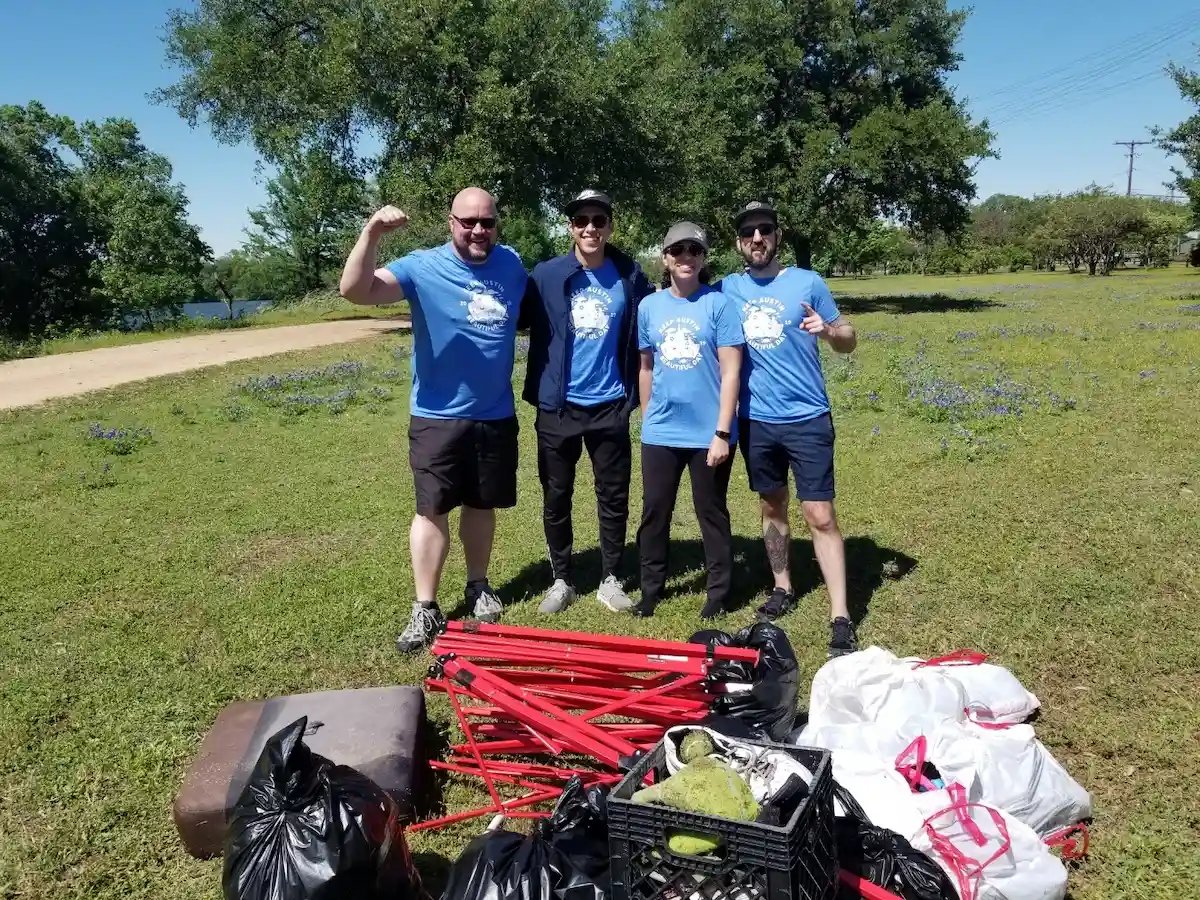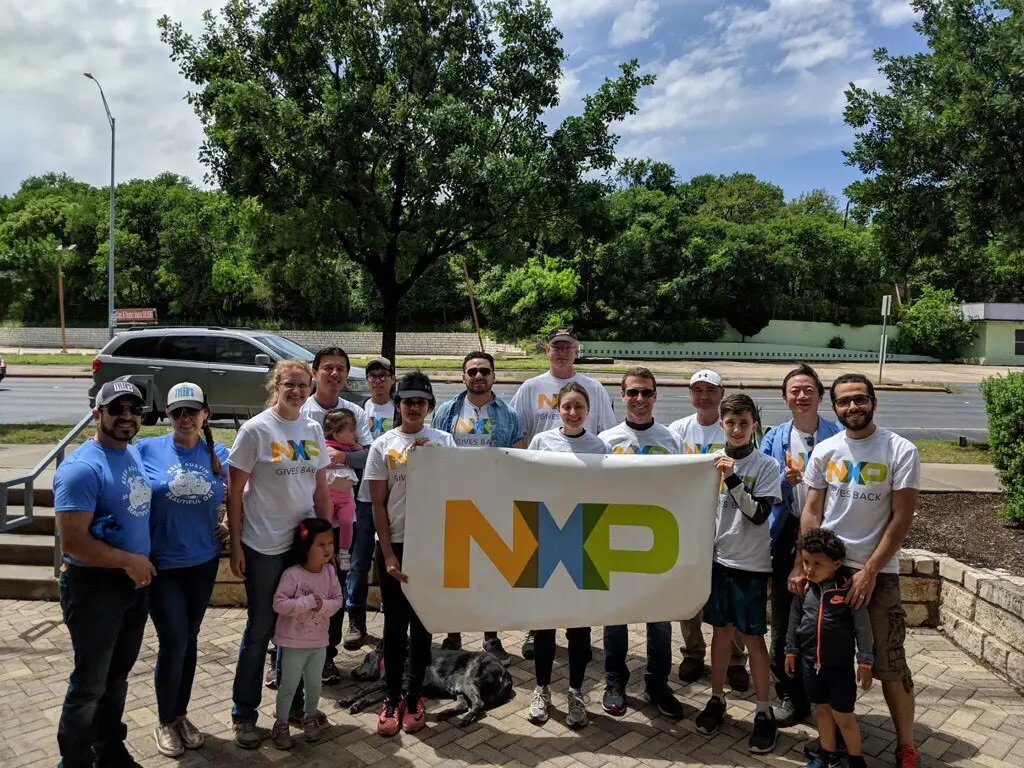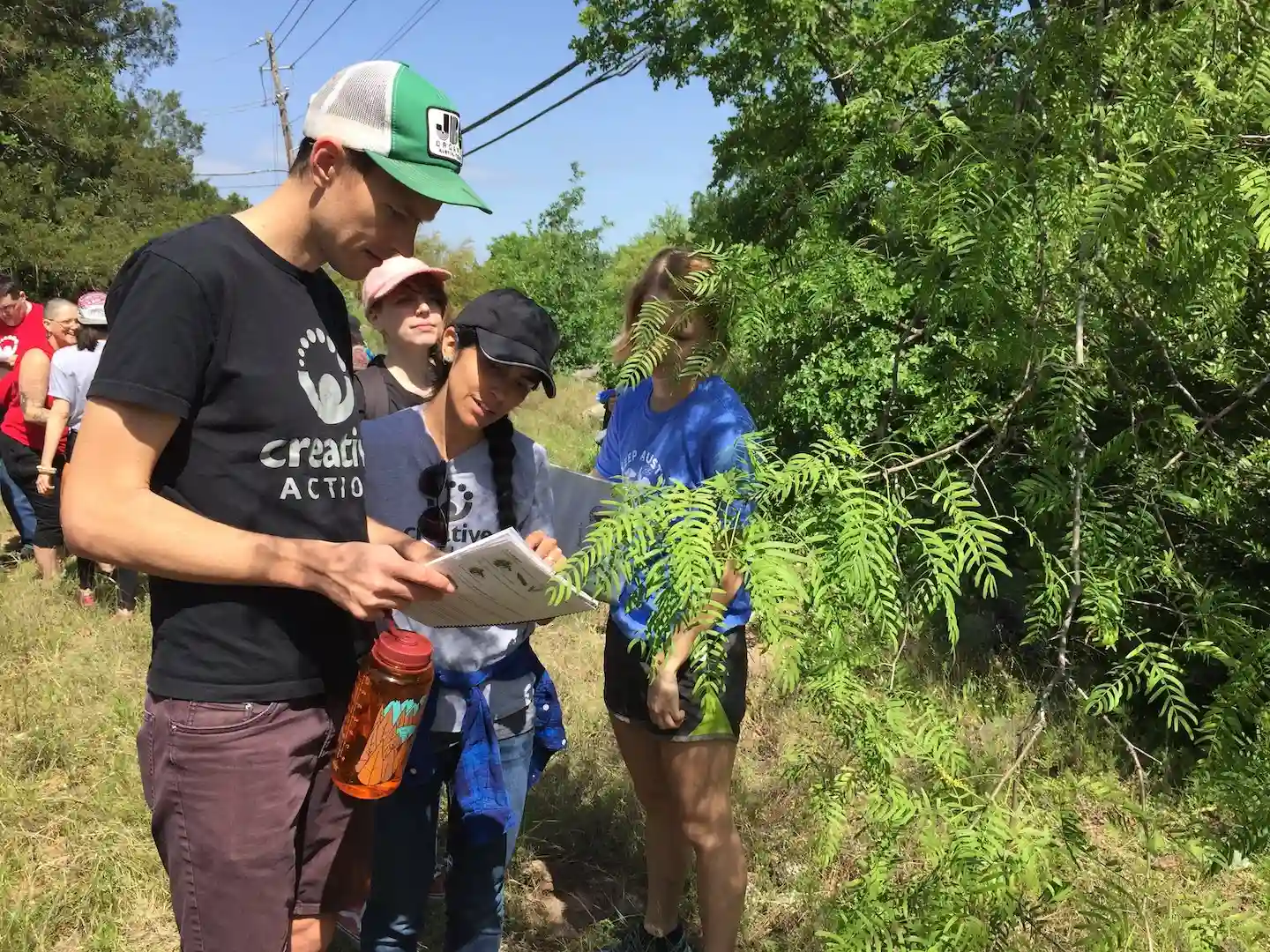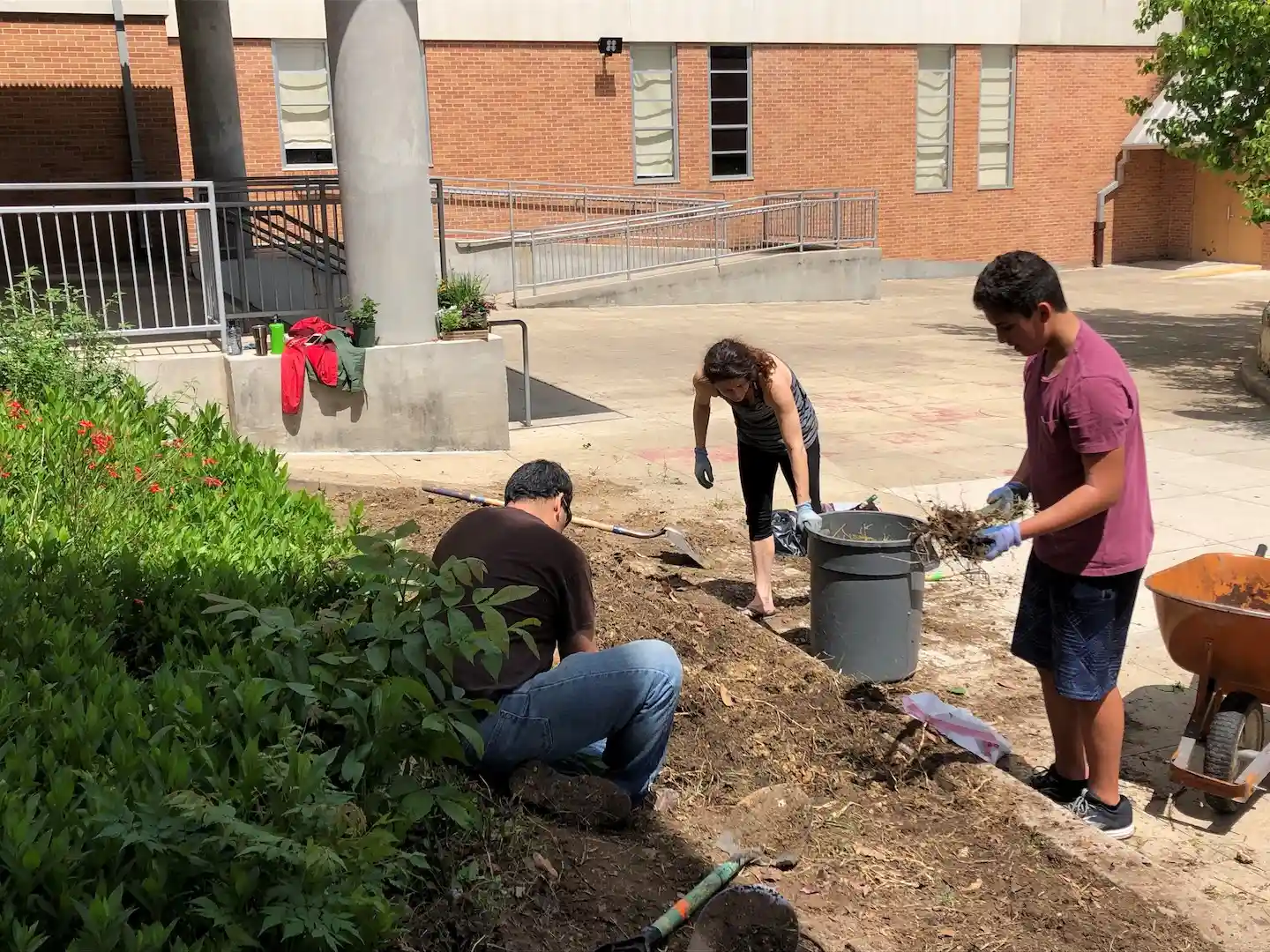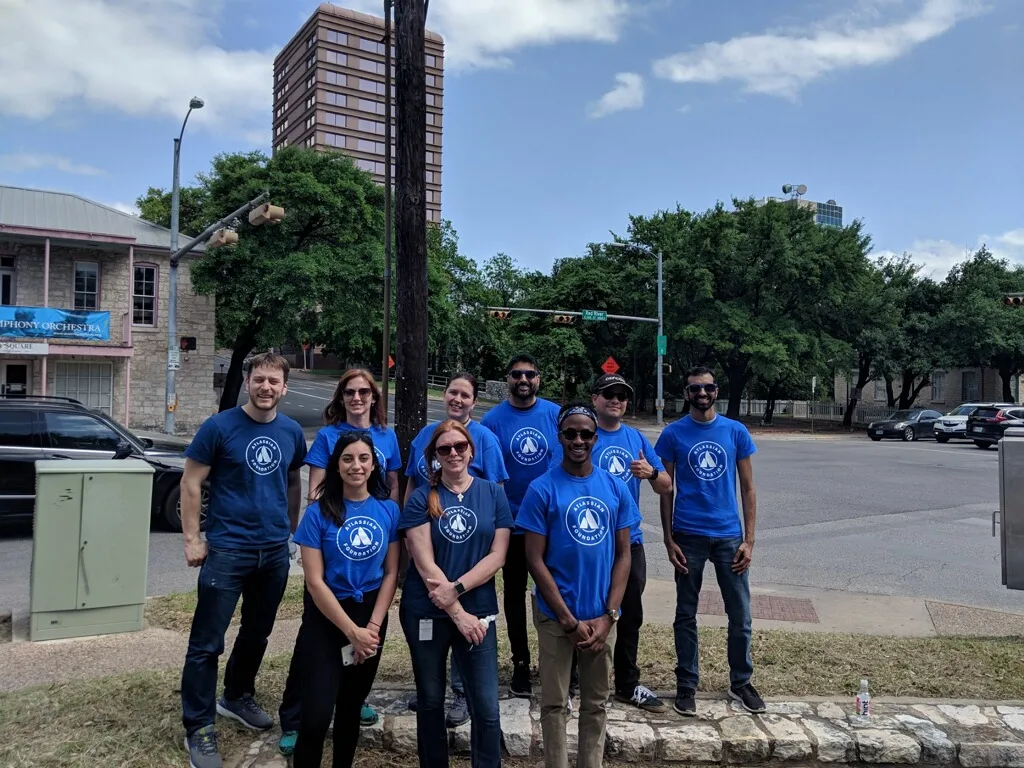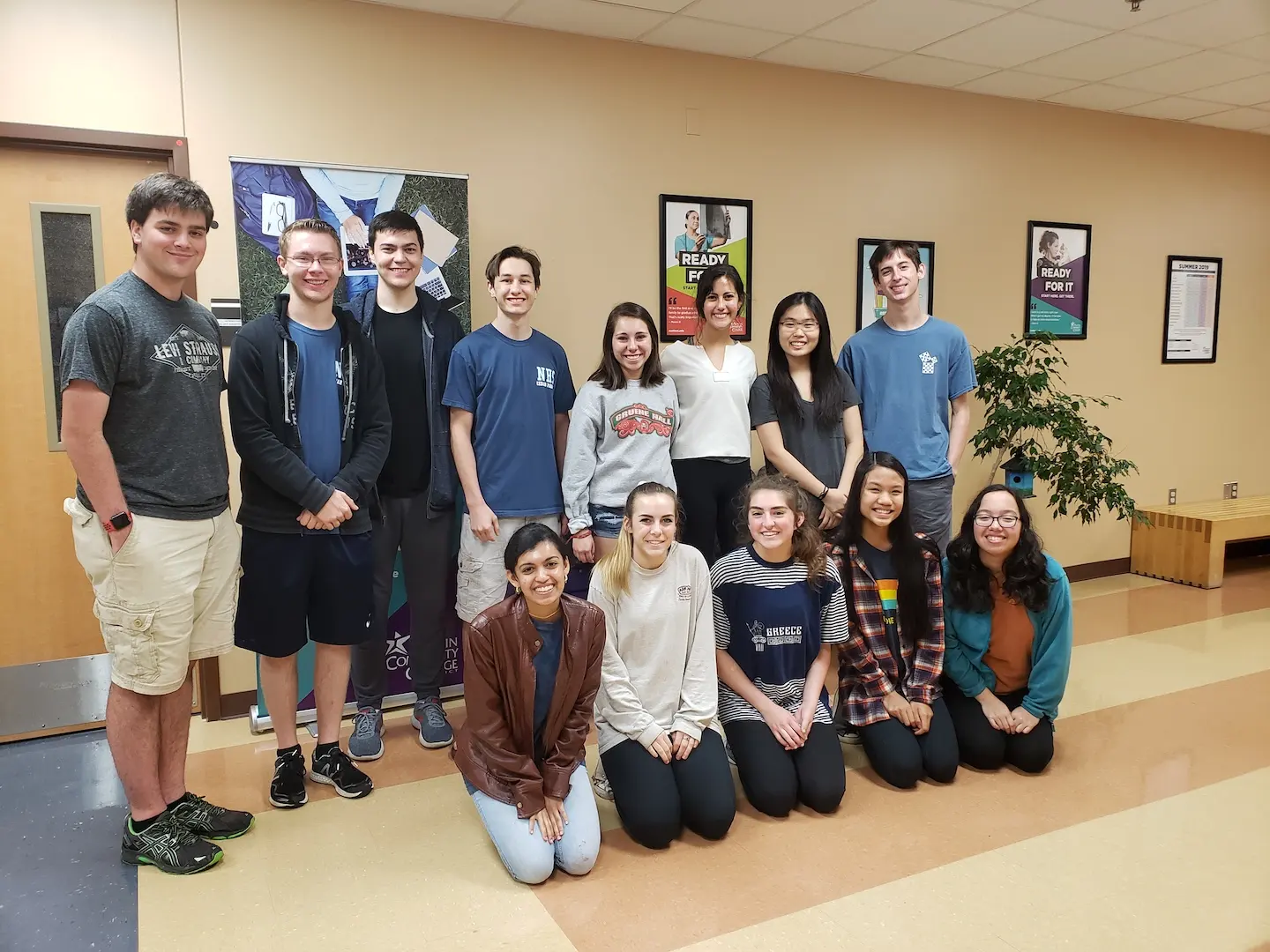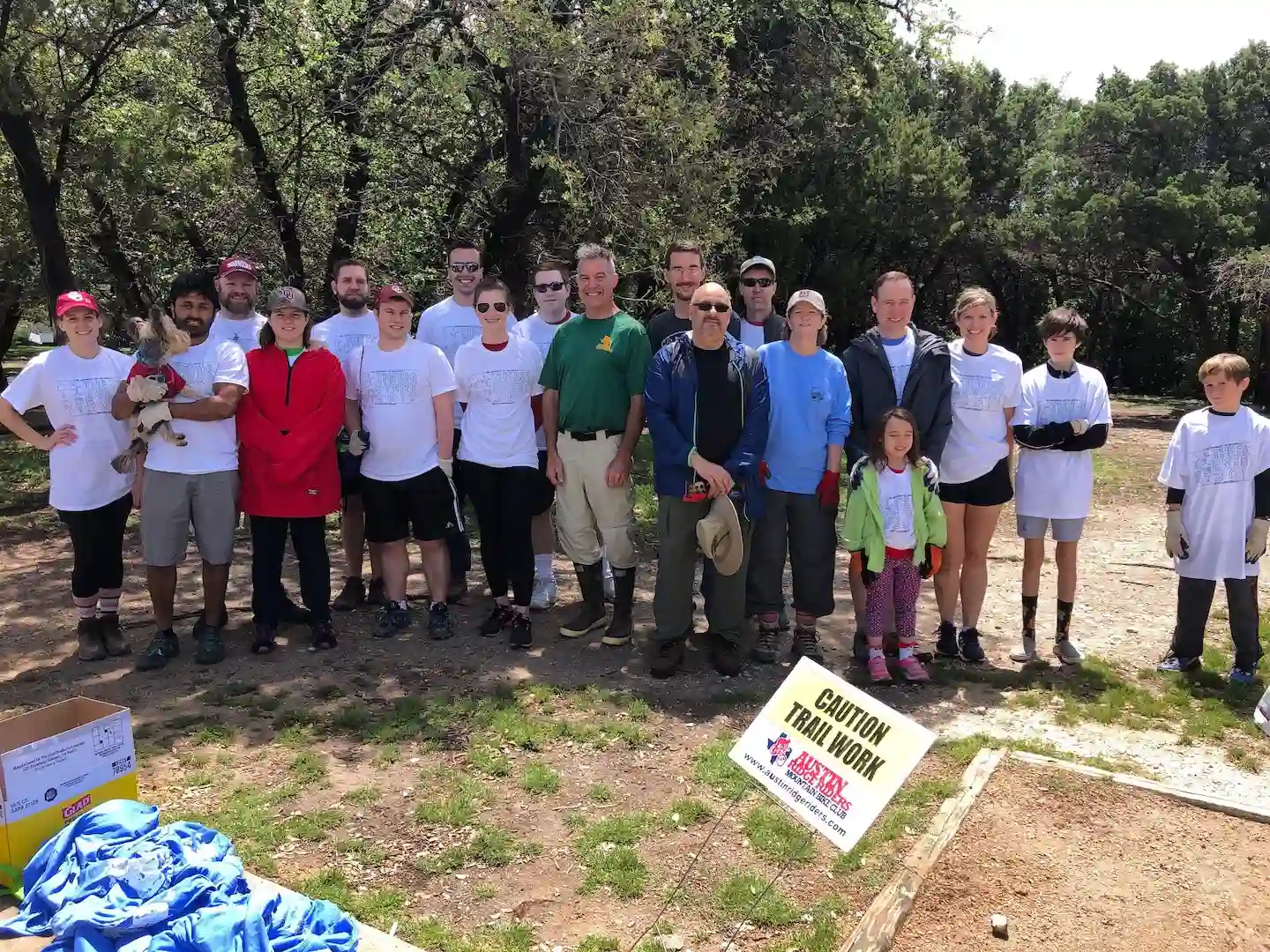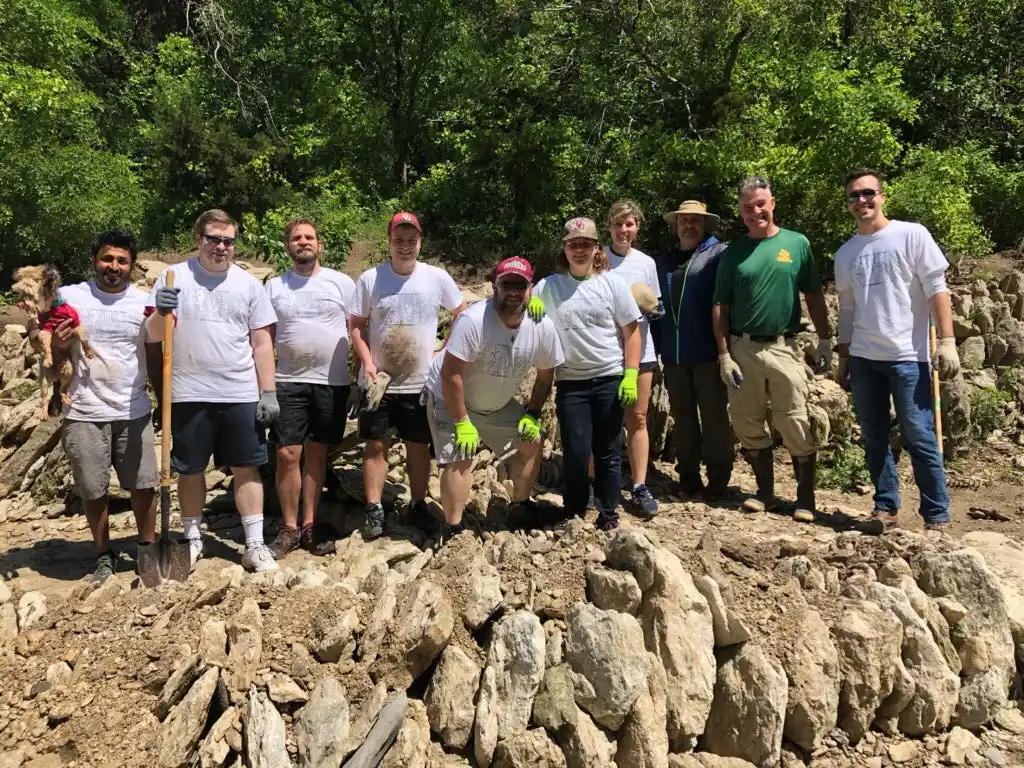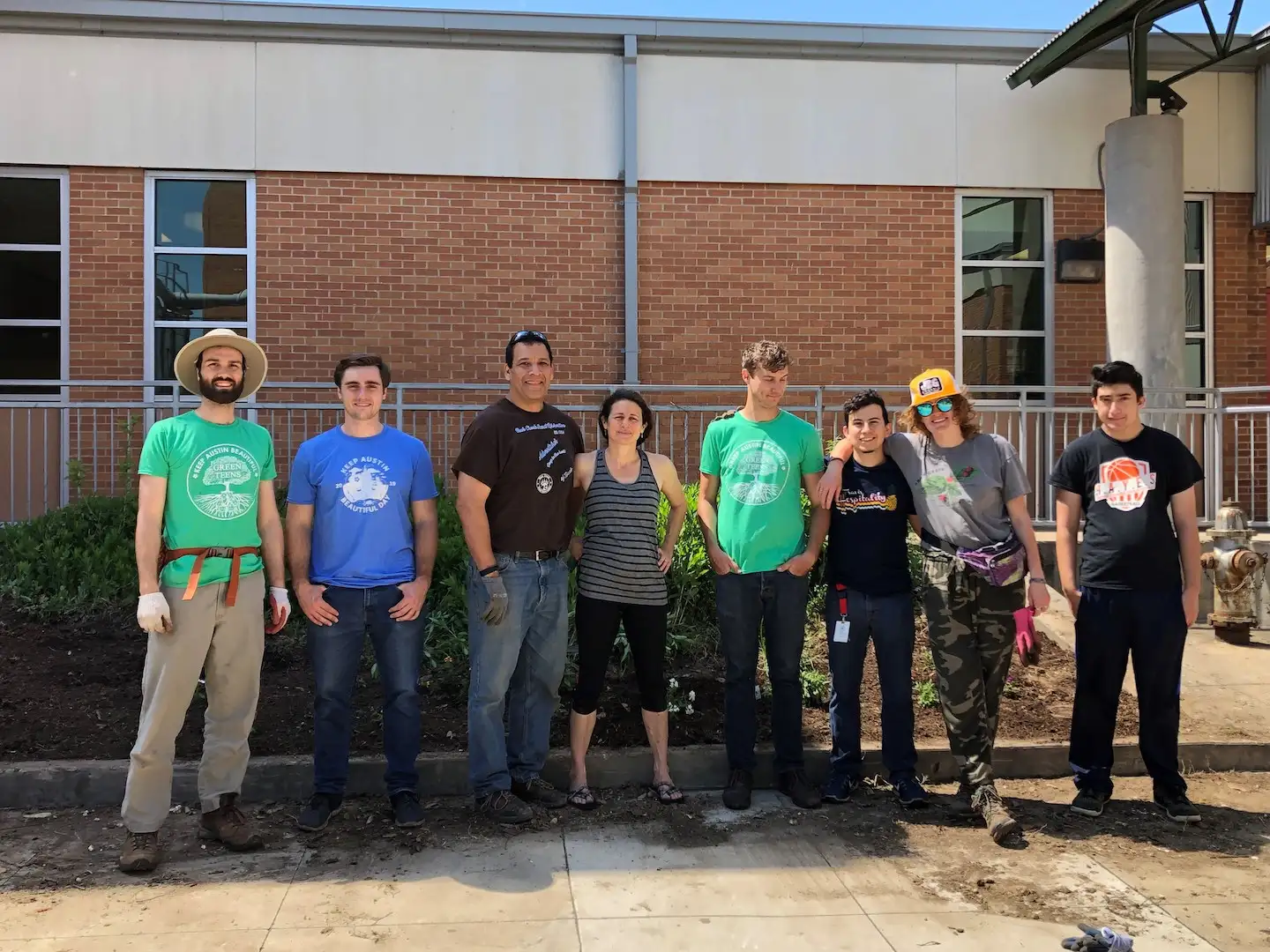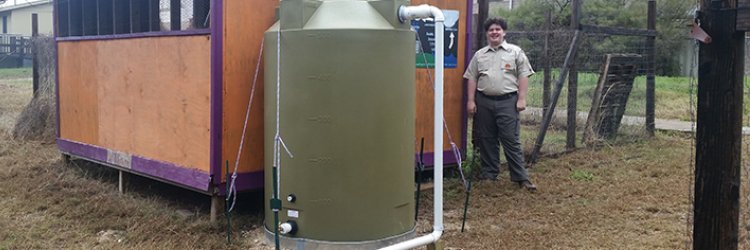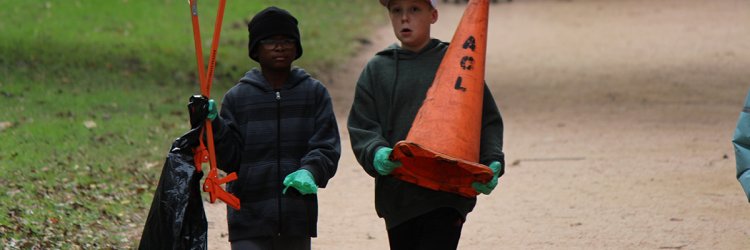Despite the rain delaying our projects by a few hours, Keep Austin Beautiful Day was a success, thanks to the unwavering dedication of the Austin community.
- 53 sites across Austin
- 921 volunteers beautified our green spaces and cleaned our water ways
- 8,800 pounds of trash removed from our parks, creeks, and waterways
- 855 pounds of recycling diverted from landfill
Such a large community event would not have been possible without the support of our sponsors, especially our presenting sponsor, Samsung Austin Semiconductor. Not only do our sponsors support us financially, but they give their time and volunteer throughout the year.
Already looking forward to next year? Save the date: April 18, 2020.
